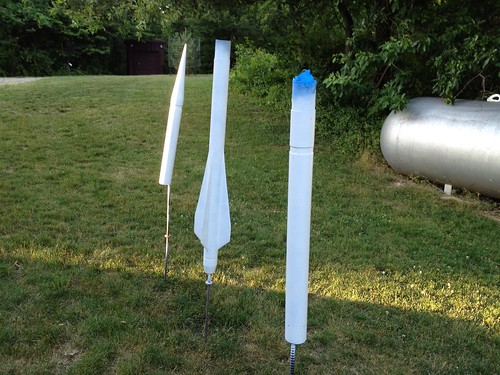Last weekend I painted my Big Daddy. Posted a thread here how the paint "fogged" on me. Well I sanded it down and tried repainting it again. Didn't work. It "fogged" again (fin area). So I thought I would paint silver over it and tape off some areas so I would have silver with red lines...nadda didn't like the look so I did what almost everyone who is anal about their paint jobs. I wet sanded it down.
I had some Rusto gray 2x primer that was my brothers laying around in the garage that left. So I sprayed that on over my mess. It went on nice and thick and I liked it that way it covers. I don't know what it's it's like to sand it, but there are a couple areas that need some attention from the previous paint job. Figure I would sand those later tonight and hit it with another coat.
I also have some gloss white automotive paint from Rusto that I tried using last time without much a success. It came out like cottage cheese. My common sense tells me not to use it, but hate to see it sitting on the shelf going to waste so I might try it out on some scrap body tubes. I'm just trying to use up what I have laying around without going out shopping for more.
The nose turned out nice. It's a Royal Blue with a silver shoulder. I'll post pictures of this mess when I'm done.
I had some Rusto gray 2x primer that was my brothers laying around in the garage that left. So I sprayed that on over my mess. It went on nice and thick and I liked it that way it covers. I don't know what it's it's like to sand it, but there are a couple areas that need some attention from the previous paint job. Figure I would sand those later tonight and hit it with another coat.
I also have some gloss white automotive paint from Rusto that I tried using last time without much a success. It came out like cottage cheese. My common sense tells me not to use it, but hate to see it sitting on the shelf going to waste so I might try it out on some scrap body tubes. I'm just trying to use up what I have laying around without going out shopping for more.
The nose turned out nice. It's a Royal Blue with a silver shoulder. I'll post pictures of this mess when I'm done.





